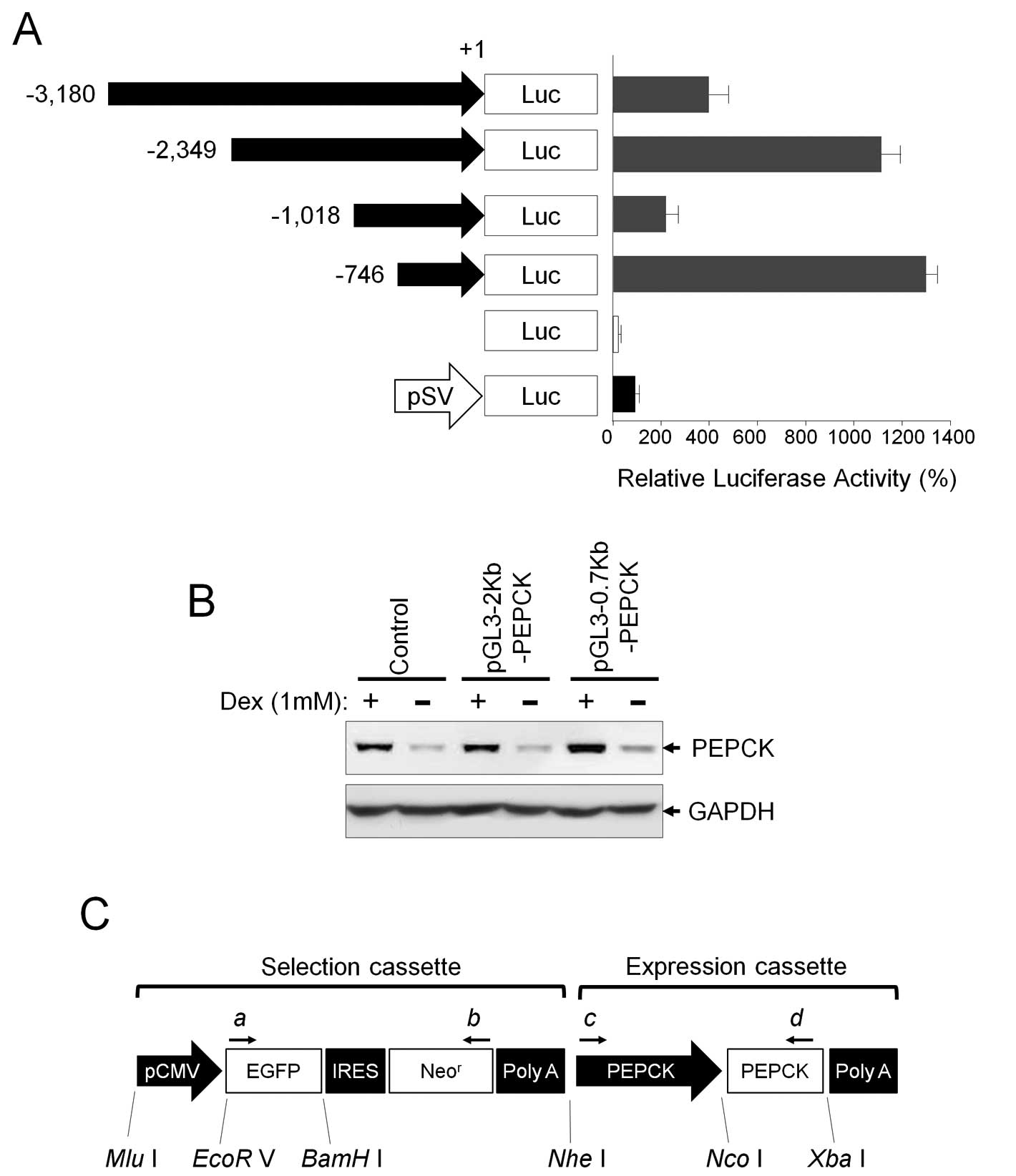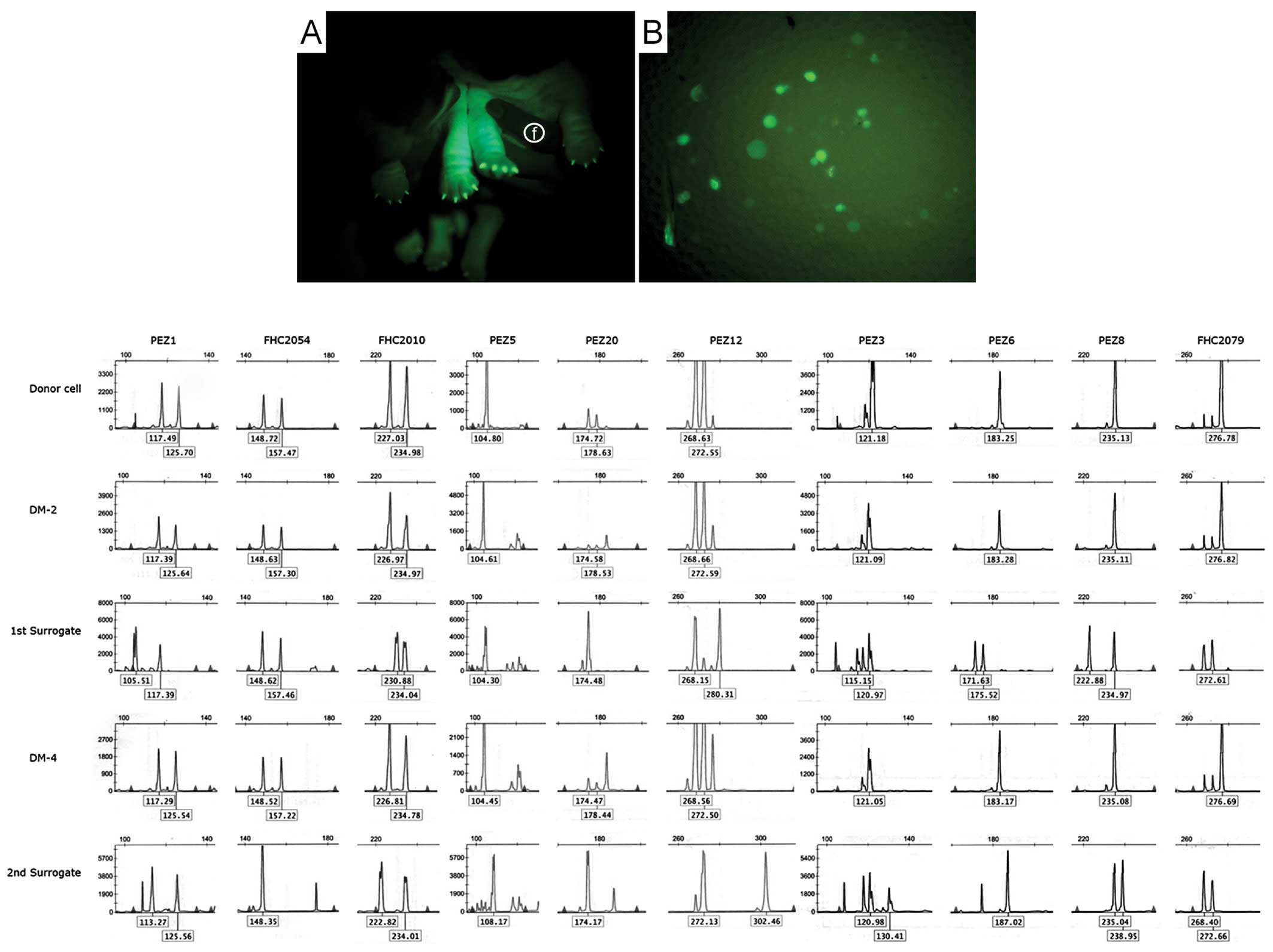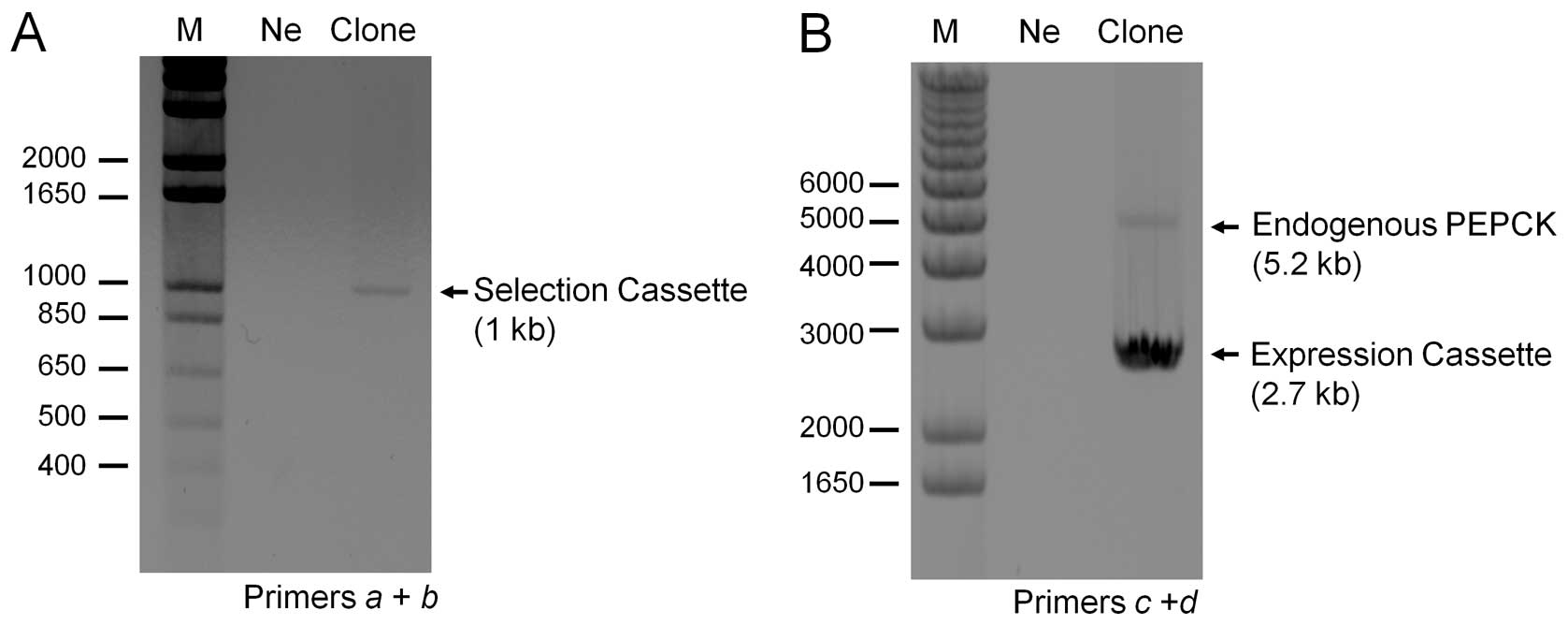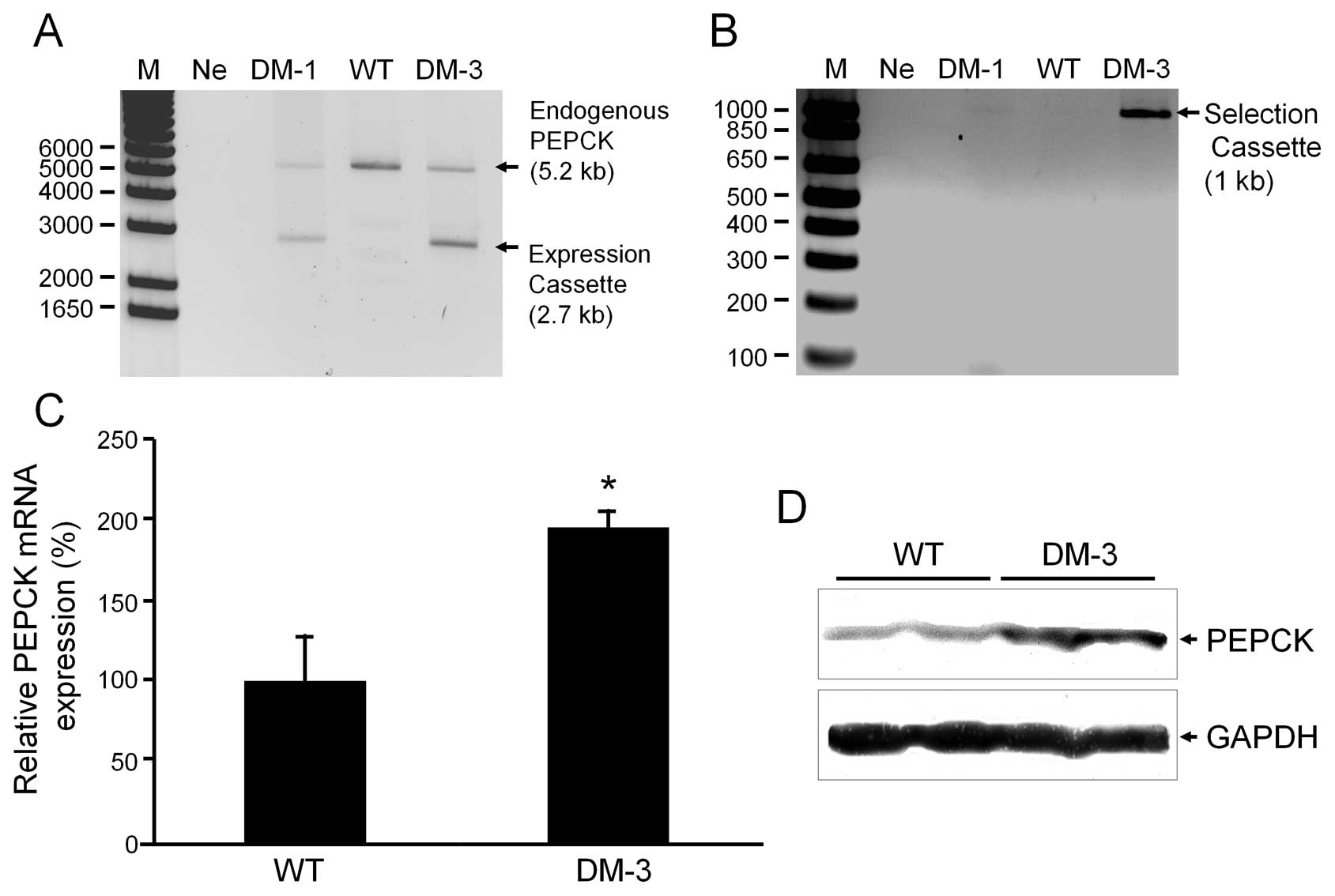|
1.
|
I WilmutA SchniekeJ McWhirA KindK
CampbellViable offspring derived from fetal and adult mammalian
cellsNature385810813199710.1038/385810a09039911
|
|
2.
|
A BaguisiE BehboodiDT MelicanProduction of
goats by somatic cell nuclear transferNat
Biotechnol17456461199910.1038/863210331804
|
|
3.
|
P ChesnePG AdenotC VigliettaM BaratteL
BoulangerJP RenardCloned rabbits produced by nuclear transfer from
adult somatic cellsNat
Biotechnol20366369200210.1038/nbt0402-36611923842
|
|
4.
|
JB CibelliSL SticePJ GoluekeCloned
transgenic calves produced from nonquiescent fetal
fibroblastsScience2801256199810.1126/science.280.5367.12569596577
|
|
5.
|
BC LeeMK KimG JangDogs cloned from adult
somatic cellsNature436641200510.1038/436641a16079832
|
|
6.
|
Z LiX SunJ ChenCloned ferrets produced by
somatic cell nuclear transferDev
Biol293439200610.1016/j.ydbio.2006.02.01616584722
|
|
7.
|
IA PolejaevaSH ChenTD VaughtCloned pigs
produced by nuclear transfer from adult somatic
cellsNature4078690200010.1038/3502408210993078
|
|
8.
|
T WakayamaACF PerryM ZuccottiKR JohnsonR
YanagimachiFull-term development of mice from enucleated oocytes
injected with cumulus cell
nucleiNature394369374199810.1038/286159690471
|
|
9.
|
Q ZhouJP RenardG Le FriecGeneration of
fertile cloned rats by regulating oocyte
activationScience3021179200310.1126/science.108831314512506
|
|
10.
|
G JangS HongH OhA cloned toy poodle
produced from somatic cells derived from an aged female
dogTheriogenology69556563200810.1016/j.theriogenology.2007.11.00218243292
|
|
11.
|
MS HosseinYW JeongSW ParkBirth of Beagle
dogs by somatic cell nuclear transferAnim Reprod
Sci114404414200910.1016/j.anireprosci.2008.10.01019059739
|
|
12.
|
S KimSW ParkMS HosseinProduction of cloned
dogs by decreasing the interval between fusion and activation
during somatic cell nuclear transferMol Reprod
Dev76483489200910.1002/mrd.2095318951374
|
|
13.
|
MS HosseinYW JeongSW ParkCloning Missy:
obtaining multiple offspring of a specific canine genotype by
somatic cell nuclear transferCloning Stem
Cells11123130200910.1089/clo.2008.002919226214
|
|
14.
|
MR CapecchiGene targeting in mice:
functional analysis of the mammalian genome for the twenty-first
centuryNat Rev Genet6507512200510.1038/nrg161915931173
|
|
15.
|
JW GordonTransgenic animalsInt Rev
Cytol115171229198910.1016/S0074-7696(08)60630-0
|
|
16.
|
RD PalmiterRL BrinsterGerm-line
transformation of miceAnnu Rev
Genet20465499198610.1146/annurev.ge.20.120186.0023413545063
|
|
17.
|
A StaceyJ BatemanT ChoiT MascaraW ColeR
JaenischPerinatal lethal osteogenesis imperfecta in transgenic mice
bearing an engineered mutant pro-alpha 1 (I) collagen
geneNature332131198810.1038/332131a02450280
|
|
18.
|
EK KarlssonK Lindblad-TohLeader of the
pack: gene mapping in dogs and other model organismsNat Rev
Genet9713725200810.1038/nrg238218714291
|
|
19.
|
EA OstranderF GalibertDF PattersonCanine
genetics comes of ageTrends
Genet16117124200010.1016/S0168-9525(99)01958-710689352
|
|
20.
|
RW HansonL ReshefRegulation of
phosphoenolpyruvate carboxykinase (GTP) gene expressionAnnu Rev
Biochem66581611199710.1146/annurev.biochem.66.1.5819242918
|
|
21.
|
A ValeraA PujolM PelegrinF BoschTransgenic
mice overexpressing phosphoenolpyruvate carboxykinase develop
non-insulin-dependent diabetes mellitusProc Natl Acad Sci
USA919151199410.1073/pnas.91.19.9151
|
|
22.
|
IH HongYW JeongT ShinMorphological
abnormalities, impaired fetal development and decrease in myostatin
expression following somatic cell nuclear transfer in dogsMol
Reprod Dev5337346201110.1002/mrd.2130921520324
|
|
23.
|
KL TsaiLA ClarkKE MurphyUnderstanding
hereditary diseases using the dog and human as companion model
systemsMamm Genome18444451200710.1007/s00335-007-9037-117653794
|
|
24.
|
GC LuvoniS ChigioniE AllieviD MacisFactors
involved in vivo and in vitro maturation of canine
oocytesTheriogenology634159200510.1016/j.theriogenology.2004.03.00415589272
|
|
25.
|
A PowellN TalbotK WellsD KerrV PurselR
WallCell donor influences success of producing cattle by somatic
cell nuclear transferBiol
Reprod71210200410.1095/biolreprod.104.02719314998911
|
|
26.
|
DN WellsPM MisicaHR TervitProduction of
cloned calves following nuclear transfer with cultured adult mural
granulosa cellsBiol Reprod60996199910.1095/biolreprod60.4.996
|
|
27.
|
SG HongG JangMK KimDogs cloned from fetal
fibroblasts by nuclear transferAnim Reprod
Sci115334339200910.1016/j.anireprosci.2008.12.00519135320
|
|
28.
|
HJ OhJE ParkMJ KimRecloned dogs derived
from adipose stem cells of a transgenic cloned
beagleTheriogenology7512211231201110.1016/j.theriogenology.2010.11.03521220163
|
|
29.
|
P BoschSL PrattSL SticeIsolation,
characterization, gene modification, and nuclear reprogramming of
porcine mesenchymal stem cellsBiol
Reprod7446200610.1095/biolreprod.105.04513816162872
|
|
30.
|
MC GómezCE PopeRH KutnerGeneration of
domestic transgenic cloned kittens using lentivirus vectorsCloning
Stem Cells11167176200919203232
|
|
31.
|
DL SokolAM GewirtzGene therapy: basic
concepts and recent advancesCrit Rev Eukaryot Gene
Expr629199610.1615/CritRevEukarGeneExpr.v6.i1.308882306
|
|
32.
|
QR ChenL ZhangPW LutherAJ MixsonOptimal
transfection with the HK polymer depends on its degree of branching
and the pH of endocytic vesiclesNucleic Acids
Res301338200210.1093/nar/30.6.133811884631
|
|
33.
|
G NikcevicN Kovacevic-GrujicicM
StevanovicImproved transfection efficiency of cultured human
cellsCell Biol
Int27735737200310.1016/S1065-6995(03)00143-412972278
|
|
34.
|
Y SunS LiuS FergusonPhosphoenolpyruvate
carboxykinase overexpression selectively attenuates insulin
signaling and hepatic insulin sensitivity in transgenic miceJ Biol
Chem27723301200210.1074/jbc.M200964200
|
|
35.
|
RW HansonP HakimiBorn to run; the story of
the PEPCK-Cmus
mouseBiochimie90838842200810.1016/j.biochi.2008.03.00918394430
|
|
36.
|
T FallHH HamlinÅ HedhammarO KämpeA
EgenvallDiabetes mellitus in a population of 180,000 insured dogs:
incidence, survival, and breed distributionJ Vet Intern
Med2112091216200710.1111/j.1939-1676.2007.tb01940.x18196728
|













